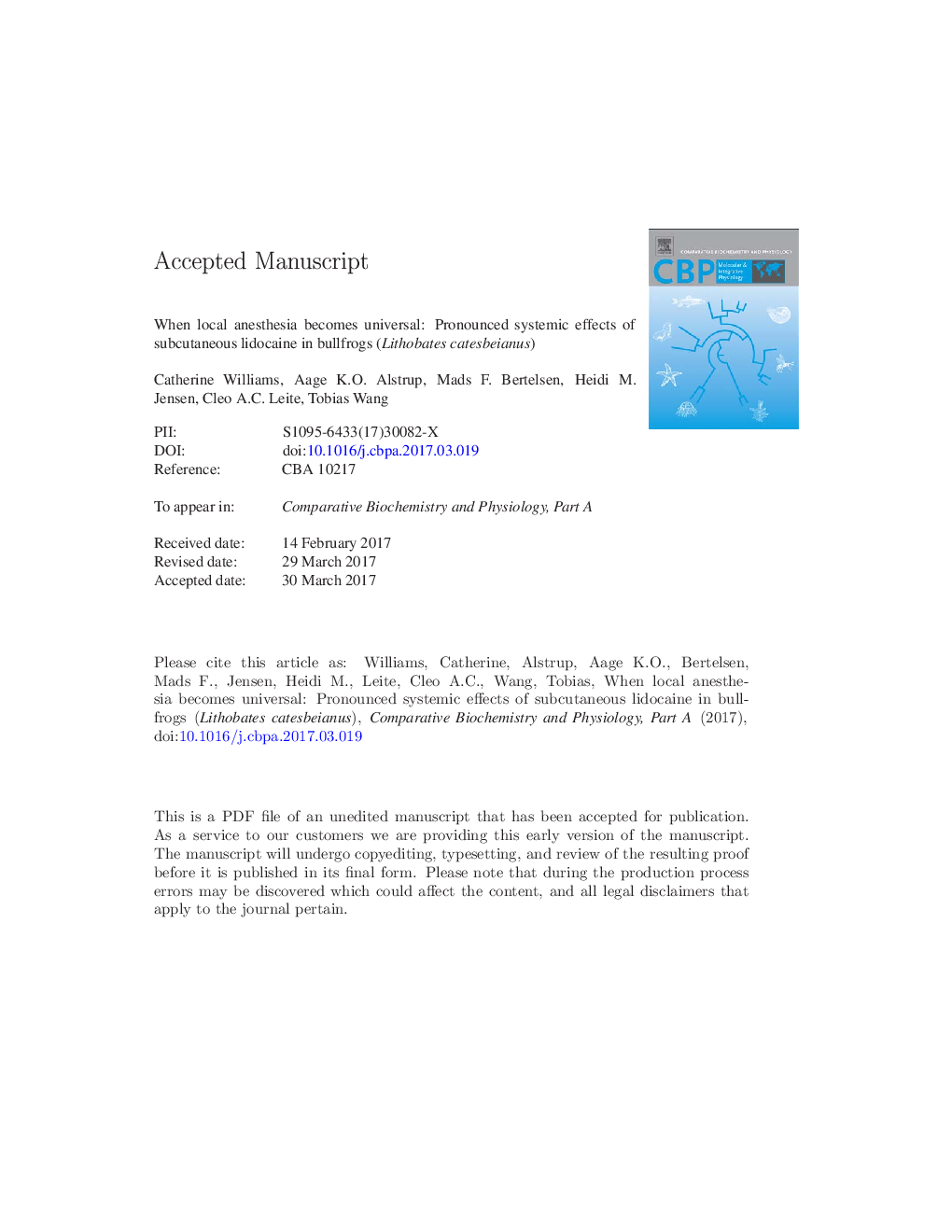| Article ID | Journal | Published Year | Pages | File Type |
|---|---|---|---|---|
| 5510294 | Comparative Biochemistry and Physiology Part A: Molecular & Integrative Physiology | 2017 | 22 Pages |
Abstract
Sodium channel blockers are commonly injected local anesthetics but are also routinely used for general immersion anesthesia in fish and amphibians. Here we report the effects of subcutaneous injection of lidocaine (5 or 50 mg kgâ 1) in the hind limb of bullfrogs (Lithobates catesbeianus) on reflexes, gular respiration and heart rate (handled group, n = 10) or blood pressure and heart rate via an arterial catheter (catheterized group n = 6). 5 mg kgâ 1 lidocaine did not cause loss of reflexes or change in heart rate in the handled group, but was associated with a reduction in gular respiratory rate (from 99 ± 7 to 81 ± 17 breaths minâ 1). 50 mg kgâ 1 lidocaine caused a further reduction in respiratory rate to 59 ± 15 breaths minâ 1, and led to a progressive loss of righting reflex (10/10 loss by 40 min), palpebral reflex (9/10 loss at 70 min), and contralateral toe pinch withdrawal (9/10 loss at 70 min). Reflexes were regained over 4 h. Systemic sedative effects were not coupled to local anti-nociception, as a forceps pinch test at the site of injection provoked movement at the height of the systemic effect (tested at 81 ± 4 min). Amphibians are routinely subject to general anesthesia via exposure to sodium channel blockers such as MS222 or benzocaine, however caution should be exercised when using local injectable lidocaine in amphibians, as it appears to dose-dependently cause sedation, without necessarily preventing local nociception for the duration of systemic effects.
Related Topics
Life Sciences
Biochemistry, Genetics and Molecular Biology
Biochemistry
Authors
Catherine J.A. Williams, Aage K.O. Alstrup, Mads F. Bertelsen, Heidi M. Jensen, Cleo A.C. Leite, Tobias Wang,
